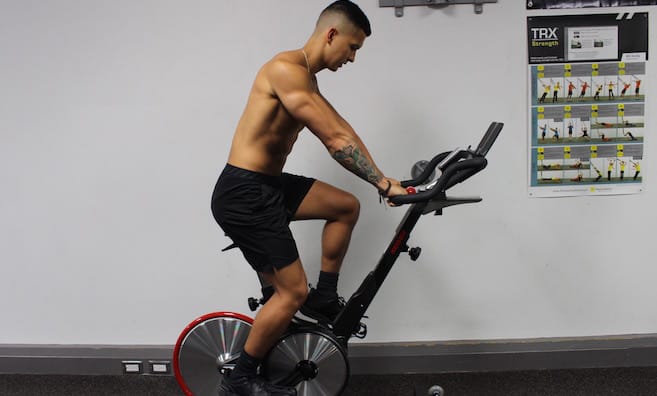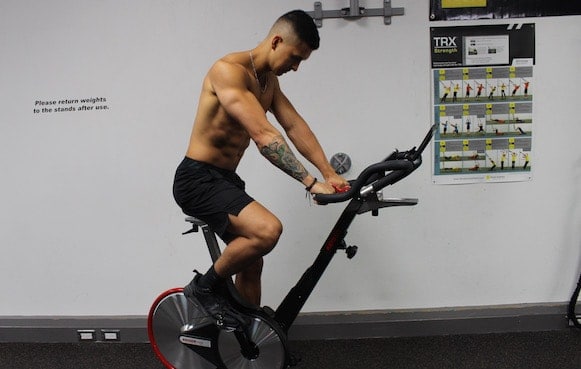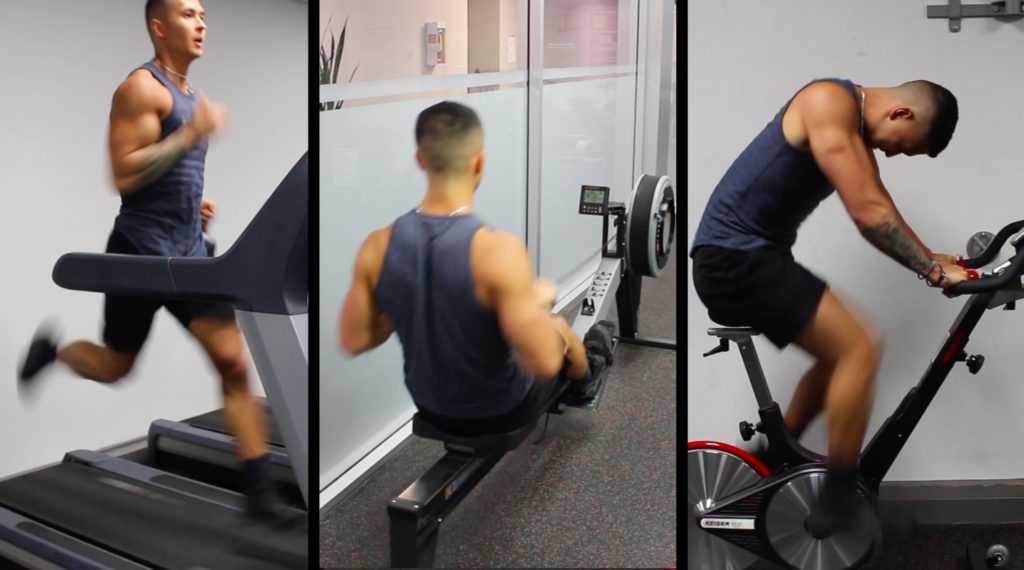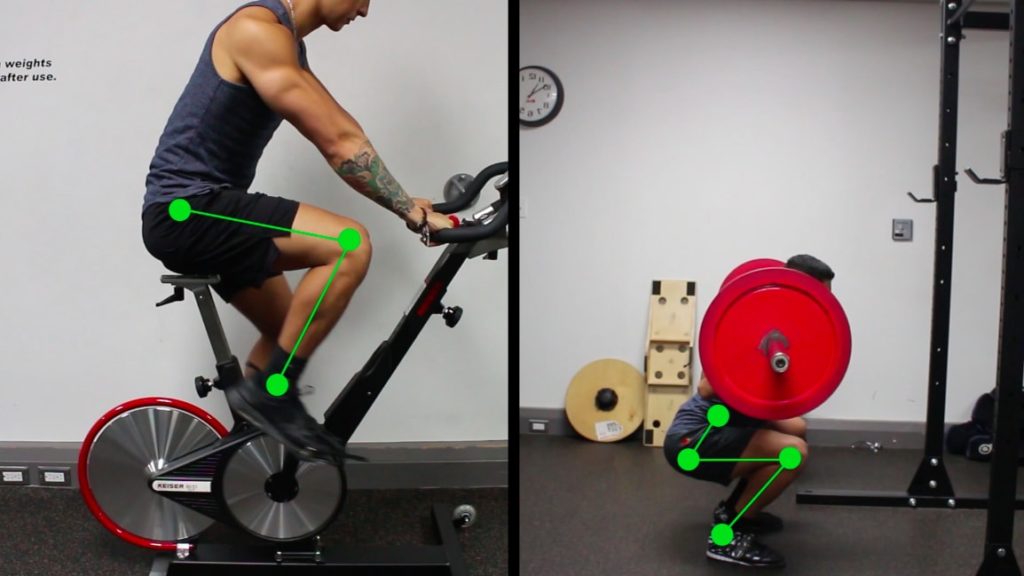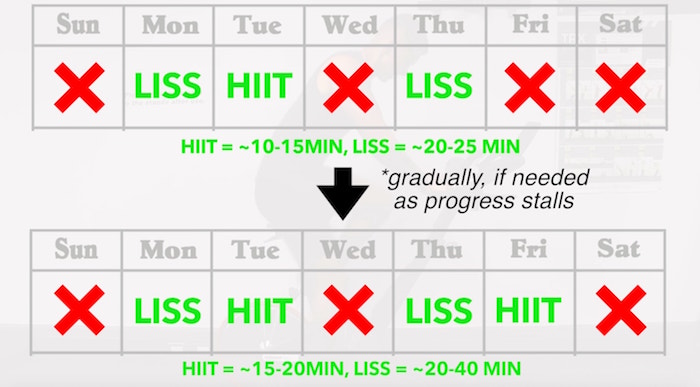The Best Science-Based Cardio Workout Plan for Fat Loss
If you want to learn what the "best fat burning cardio routine" really looks like, then you need to read this article.
When it comes to fat loss and how to best achieve it, cardio seems to be an area of confusion for most people. Now although cardio is by no means necessary to burn fat given that you’re creating a calorie deficit through your science based diet, it definitely can be a good idea to incorporate.
Why?
Well aside from the obvious cardiovascular health benefits it provides, it can also:
- Help enhance the rate of your fat loss. This is especially true once you reach low levels of body fat AND/OR if you’re sedentary for most of the day.
- Rather than creating an energy deficit entirely by just eating less food, incorporating some cardio enables you to eat a bit more while dieting. Thus, indirectly helping you better adhere to your diet in the long run.
If you're looking for a training program that'll always help you train in the most optimal approach for fat loss and muscle growth, I've got just the thing for you. Every BWS program is designed to be an all-in-one, science-based process that’ll get you to your dream physique FAST. And best of all? It's all rooted in science. For more information:
Click the button below to take my analysis quiz to discover the best program for you:
↓
The Often Overlooked Problem With Cardio...
However, one thing to keep in mind is that even if your main goal is fat loss, it’s vital that you focus on maintaining as much muscle as possible throughout the process.
This is essential to prevent simply developing a "skinny-fat" figure after all your weight loss.
And unfortunately, the downside with cardio is something called the interference effect.
Which, as summarized in this 2011 meta-analysis, simply means:
"The more cardio an individual performs and the longer the duration of each session, the more it interferes with muscle size and strength gains”.
The researchers noted that there also seems to be specific forms of cardio that are better than others at retaining muscle while maximizing fat loss.
Therefore, it’s clear that in this case, that more is not better and not all cardio exercises are created equally. So it’s vital that you set up your cardio routine appropriately in order to see the best results. And in this article, I’ll guide you through exactly how to do so.
1) HIIT Cycling
(1-2x per week, 10-20 minutes/session)
For those who are unaware, high intensity interval training, or HIIT, simply refers to a cardio protocol in which you alternate between short periods of almost all-out effort with longer periods of rest between sets. For example: going back and forth between 20-30 seconds of all-out cycling with 1 minute of light cycling.
HIIT has been shown to be superior at improving VO2 max, various cardiovascular health markers, and insulin sensitivity when compared to less intense forms of cardio.
And in terms of fat loss, you've probably heard that HIIT workouts enable you to burn more calories in a shorter period of time when compared to lower intensity cardio. Now while this is true, the main reason I personally recommend incorporating HIIT is because of its potential muscle sparing properties.
For example, the meta-analysis I mentioned earlier found that high-intensity cardio interferes less with muscle and strength gains than lower-intensity forms of cardio do.
So for this reason it would likely be the better option over extended amounts of steady state cardio.
What Form of HIIT Cardio is Best?
As for which exercise modality to use for HIIT, I’d suggest mainly starting out with cycling. Multiple studies have shown that when compared to other forms of HIIT, cycling best minimizes muscle soreness and damage after a session. Thus making it easier to recover from especially if you aren’t used to intense exercise.
In addition, as noted in this 2009 paper from the Journal of Strength and Conditioning Research, the range of motion you use when cycling is very similar to common weight training exercises like squatting and leg pressing for example. Meaning it can help better maintain or increase your strength in those leg workouts as you’re dieting.
But with that being said, running and rowing are two other viable exercise modalities for HIIT. These two exercise modalities also mimic common weight training exercises and have been shown to be effective for maintaining strength when dieting. So ultimately, choose what you enjoy the most or have the most experience with.
When to Perform HIIT?
Now as for when to perform your HIIT workouts, I’d suggest following the recommendations from this 2016 paper from the Journal of Strength and Conditioning Research.
The researchers concluded that:
"Performing your HIIT sessions on a rest day or at least after your weights workout rather than before is ideal to prevent a reduced performance in your weightlifting workouts."
How Many HIIT Workouts Per Week?
And as for how much HIIT cardio you should do, I’d advise starting with 1 session per week and then if needed you can gradually increase to a maximum of 2 or so sessions per week. Going past this will likely start to negatively interfere with your recovery from your weightlifting workouts which should always be your priority. So ideally, stick within the recommendations provided 🙂
Knowing how to set up cardio sessions that suit your training goals is pretty complicated. Thankfully, though, the team here at BWS has the necessary expertise to do just that. Our 3-on-1 coaching program takes the guesswork out of training, nutrition, and even mobility work - so you can focus on what matters: losing fat and making gains. If you're interested:
Click the button below to find out more about the 3-on-1 coaching program:
↓
2) LISS
(1-3x per week, 20-40 minutes/session)
Now the main downside with HIIT is that it’s quite taxing both mentally and physically and therefore can’t be used too often. This is why you should ideally combine it with some form of low intensity steady state cardio (LISS) as well.
And your options when it comes to steady state cardio are pretty much endless.
It can be anything from brisk walking, swimming, light cycling, and so on. As long as you’re working at a perceived effort of around 4 or so on a scale of 10.
What Form of LISS Cardio is Best?
As for what's optimal in terms of the type of LISS you do, based on the findings of this 2009 meta-analysis and for similar reasons as discussed earlier, cycling seems to once again be the ideal option for minimizing muscle loss. And although there’s no formal research on this yet, I’d also think that the stairmaster would be a viable choice as well since it does mimic lower body exercises quite well and doesn’t cause much muscle damage.
But ultimately, choose whatever activity you enjoy the most and will be most consistent with, because in the long run that’s what’s going to provide you with the best results.
When to Perform LISS?
As with your HIIT workouts, stick to performing your steady state cardio sessions ideally on a rest day or at least after your weightlifting workouts as opposed to before.
How Many LISS Workouts Per Week?
I’d suggest starting with 1-2 low intensity cardio sessions of around 20-30 minutes each. You can then gradually increase the frequency and/or duration of the sessions if needed as your progress begins to stall overtime.
Overview: The Best Cardio Workout Plan
So to sum the article up, here’s what an initial weekly routine of cardio workouts could look like for you:
Keep in mind though that the optimal amount of cardio will vary for everyone and depends on your overall activity level. But, this is definitely a good starting point.
Then once your fat loss progress begins to stall (which will happen more often as you get leaner) you can start adding more cardio as per my previous recommendations. Just ensure to do so gradually:
Your goal should be to lose roughly 0.7% of your bodyweight per week, so make adjustments to your cardio routine based on that and you'll be headed in the right direction.
And that's pretty much it for this article! Hopefully this provides you with some insight as to how to approach and optimize your cardio routine for fat loss. Just remember that although cardio is an effective fat burning tool to use, you MUST prioritize your diet and weightlifting workouts first. Otherwise, cardio can often do more harm then good!
Let me know in the comments if you have any questions/concerns that I can help you with. Don’t forget to show me your support by giving me a follow on Instagram , Facebook , and Youtube where I’ll be posting informative content on a more regular basis. Cheers!
And for those looking for a complete step-by-step program that uses science to show you how to properly train AND eat week after week to transform your body in the most efficient and injury-free way possible, then:
Click the button below to take my analysis quiz to discover the best program for you:
↓






